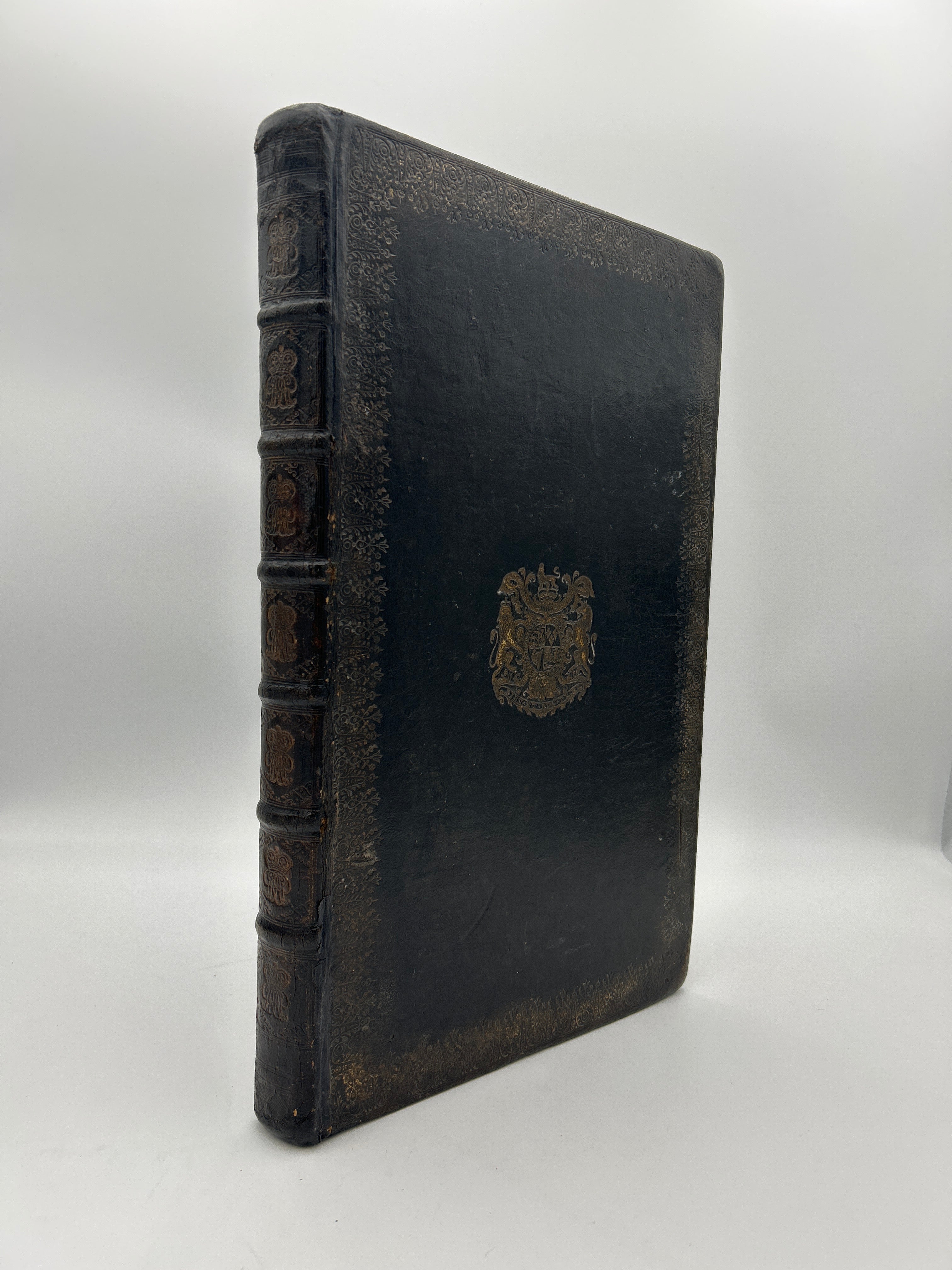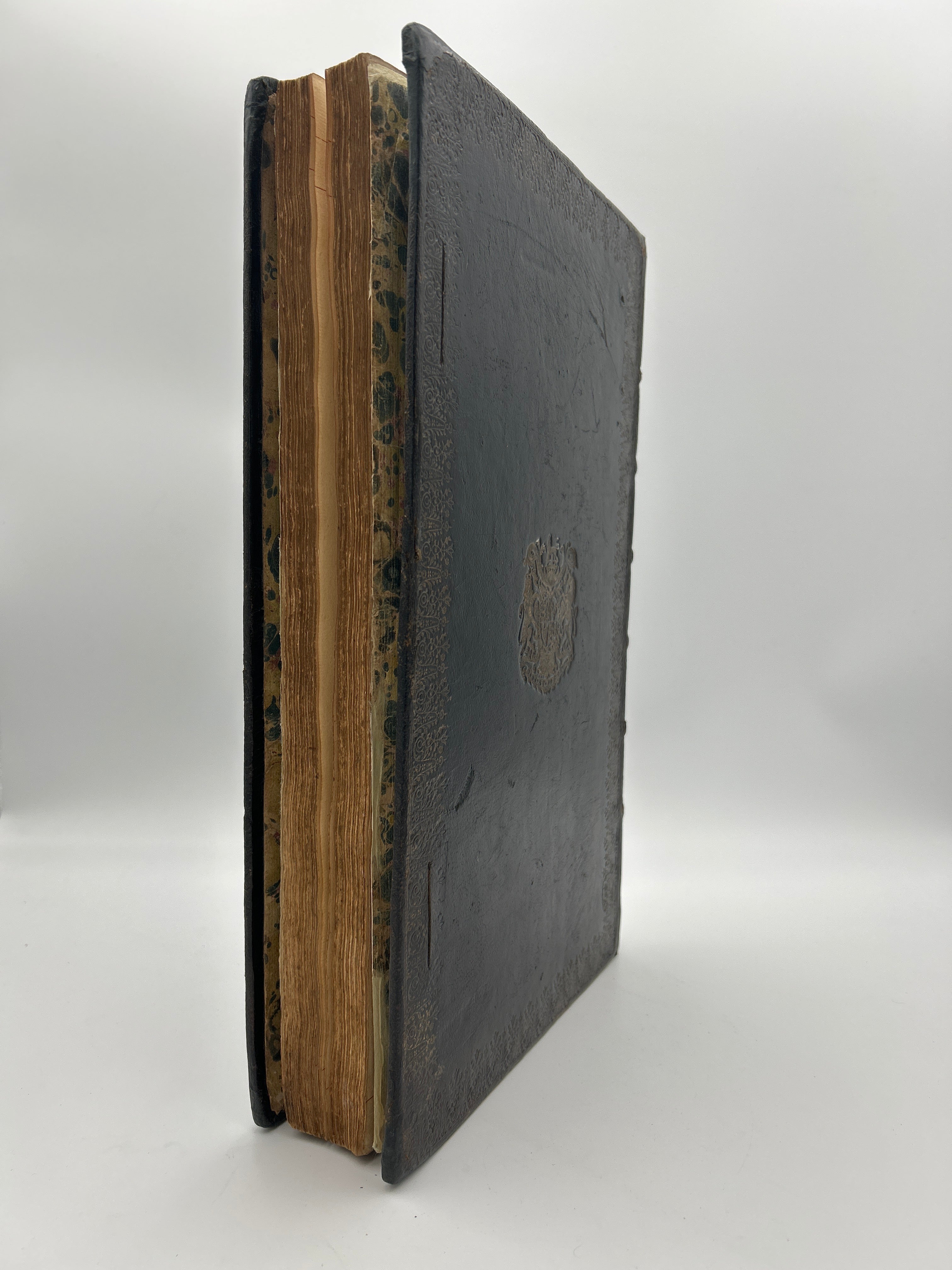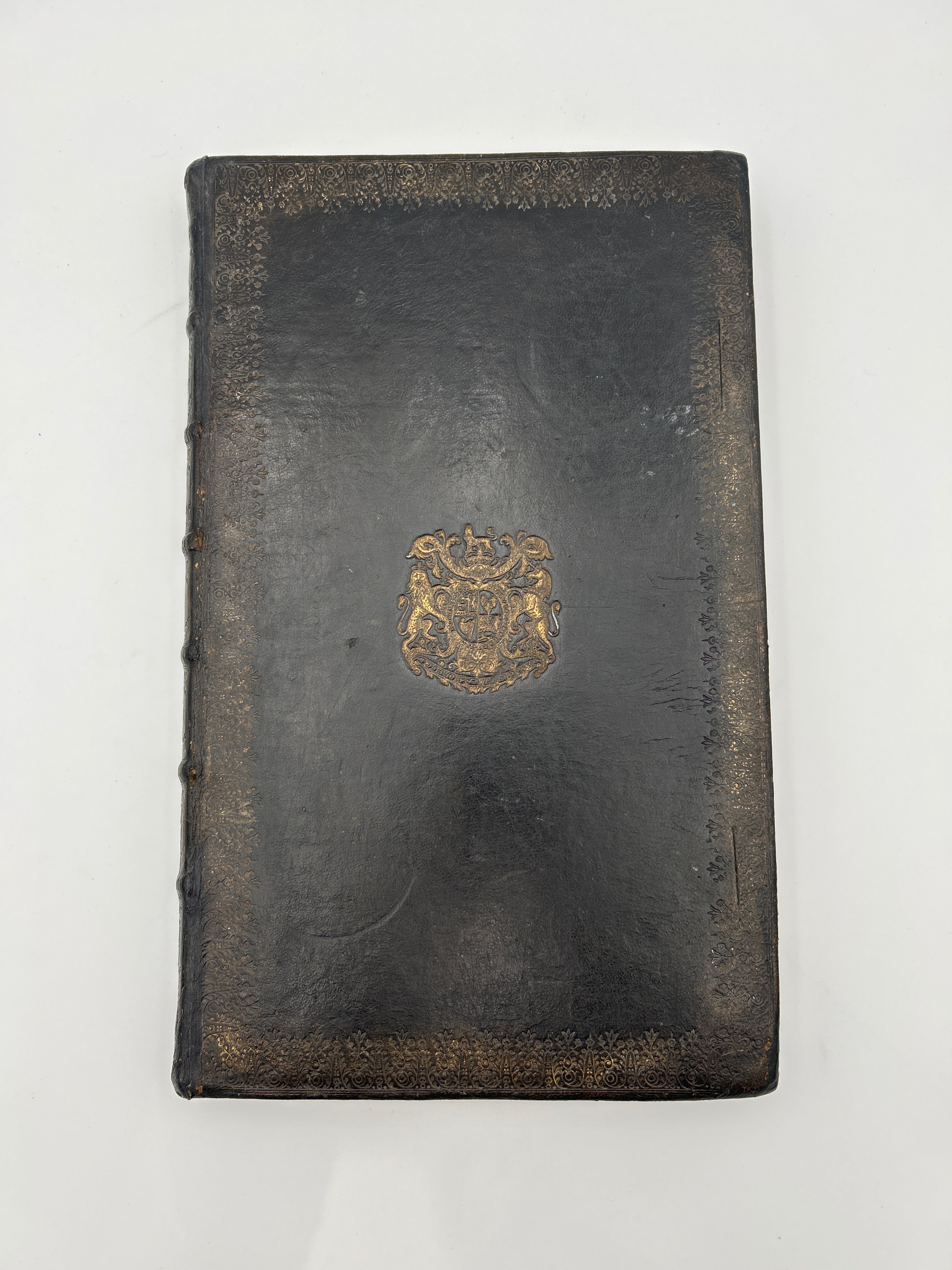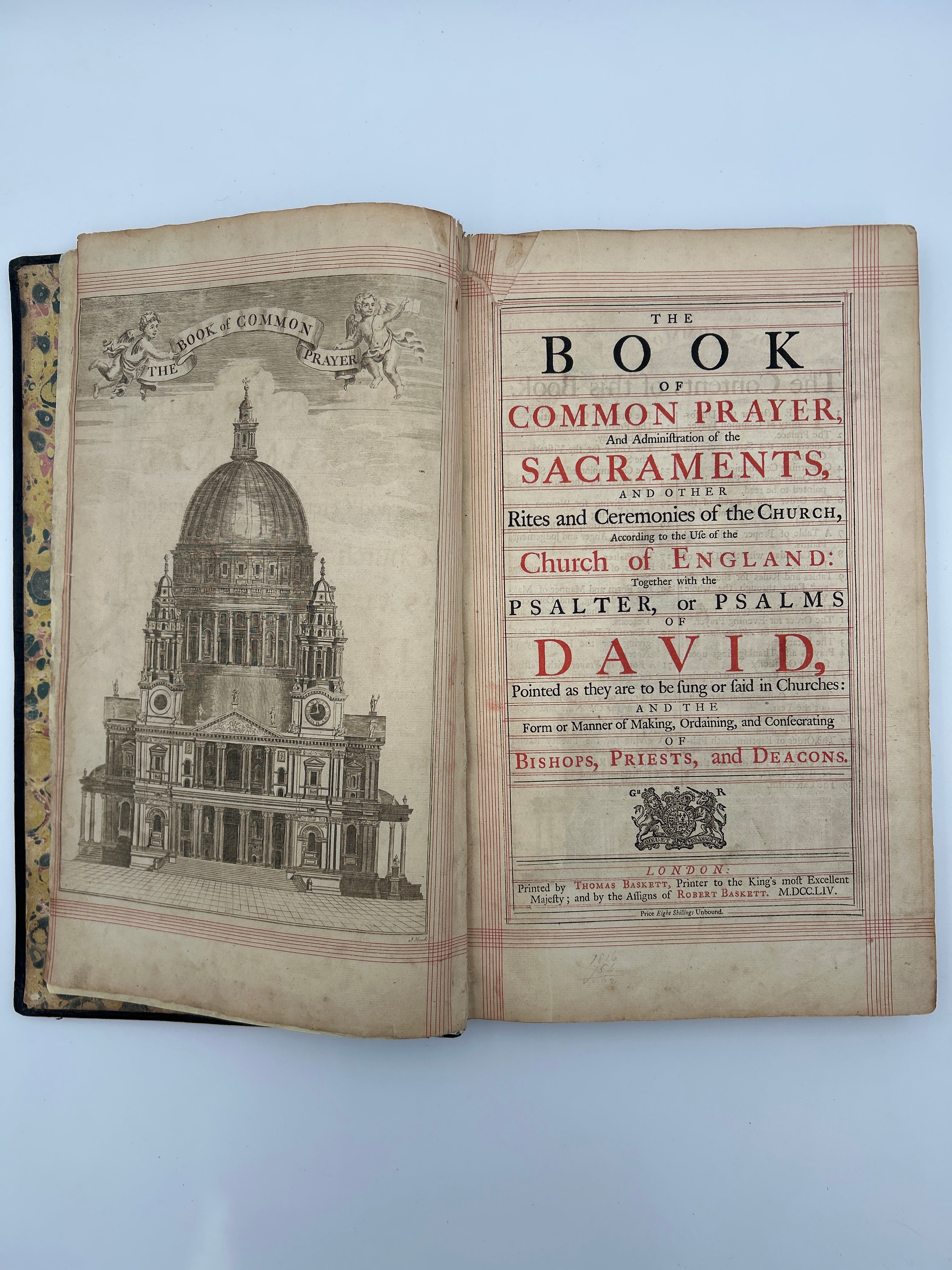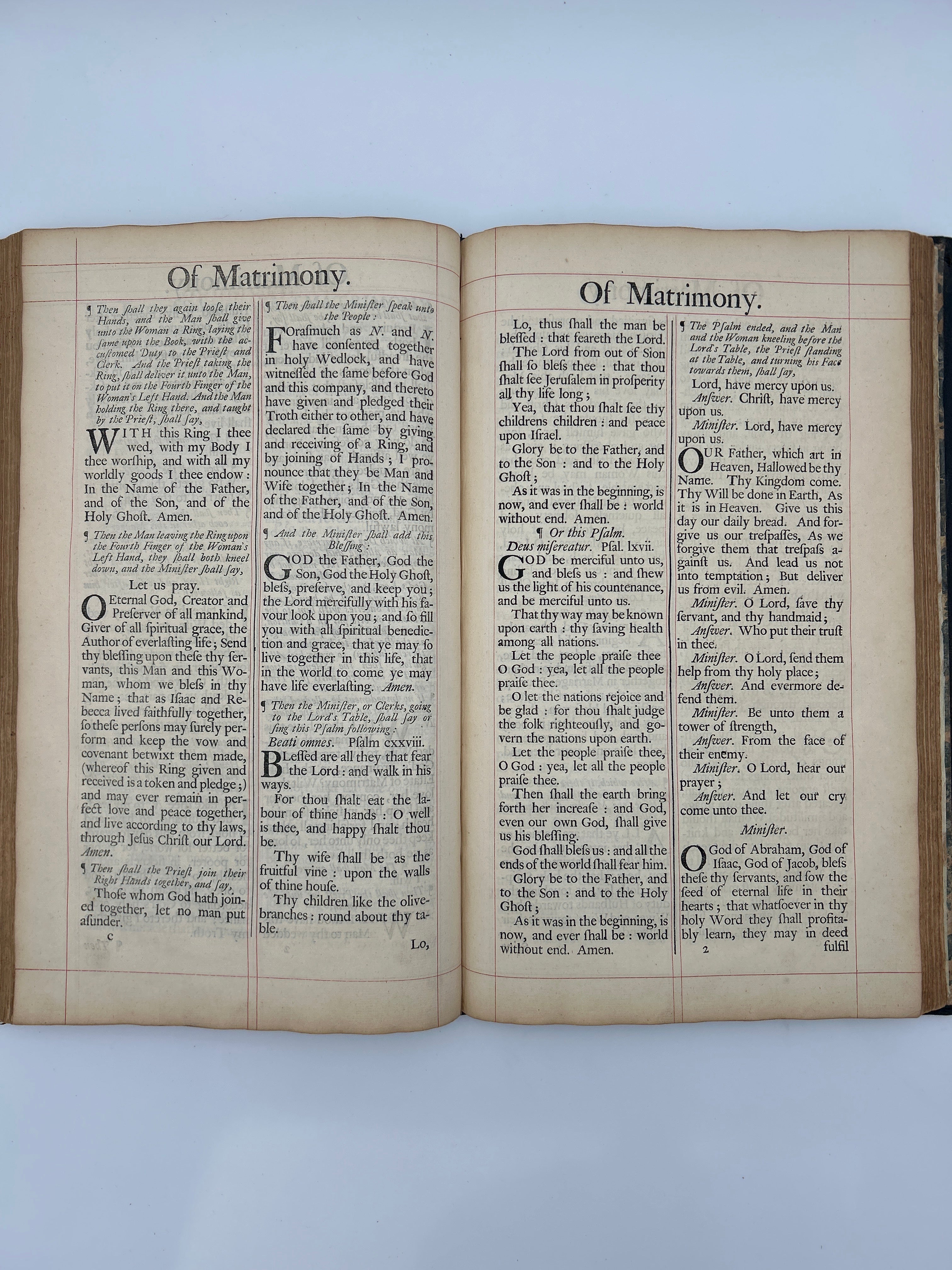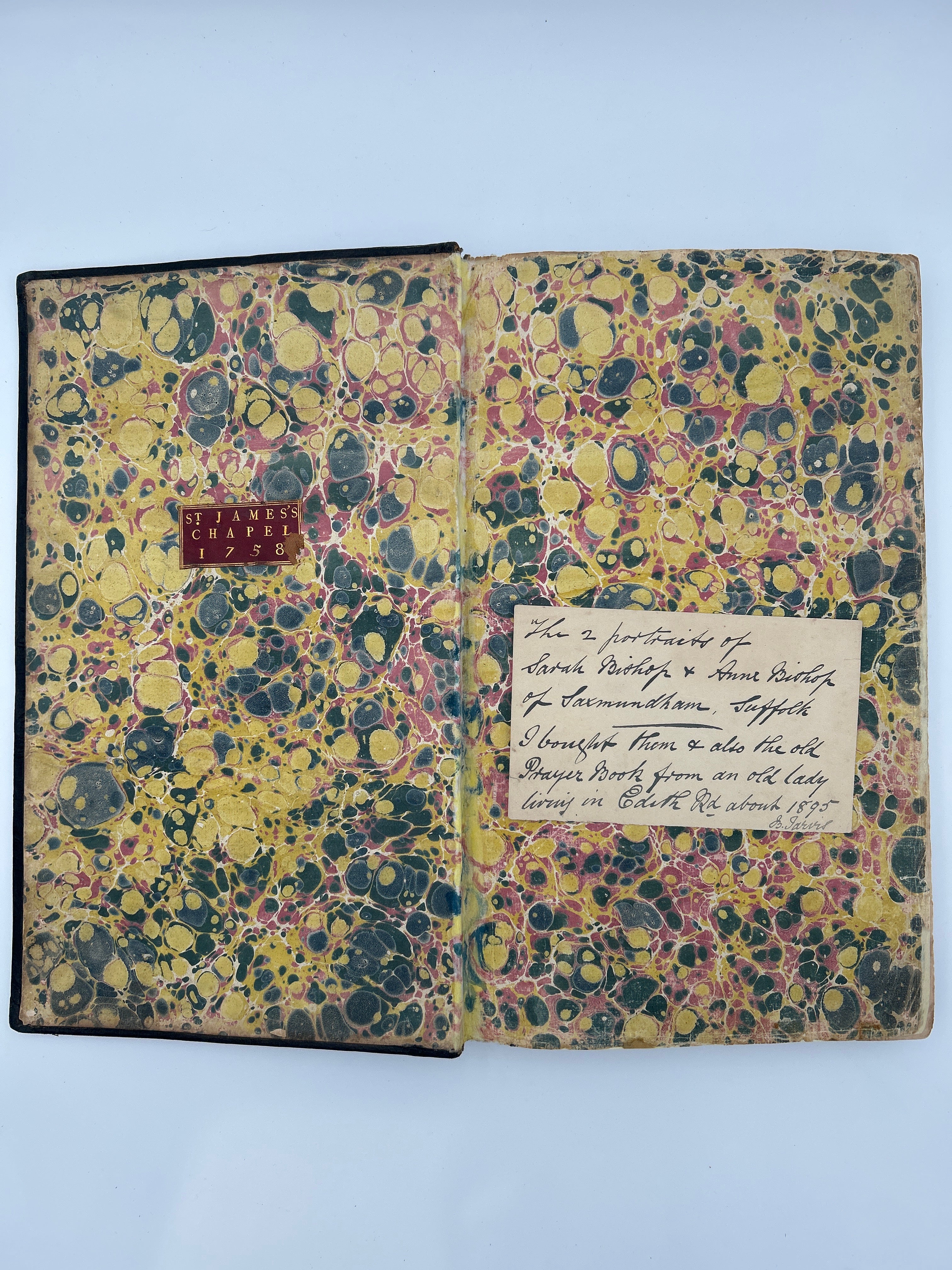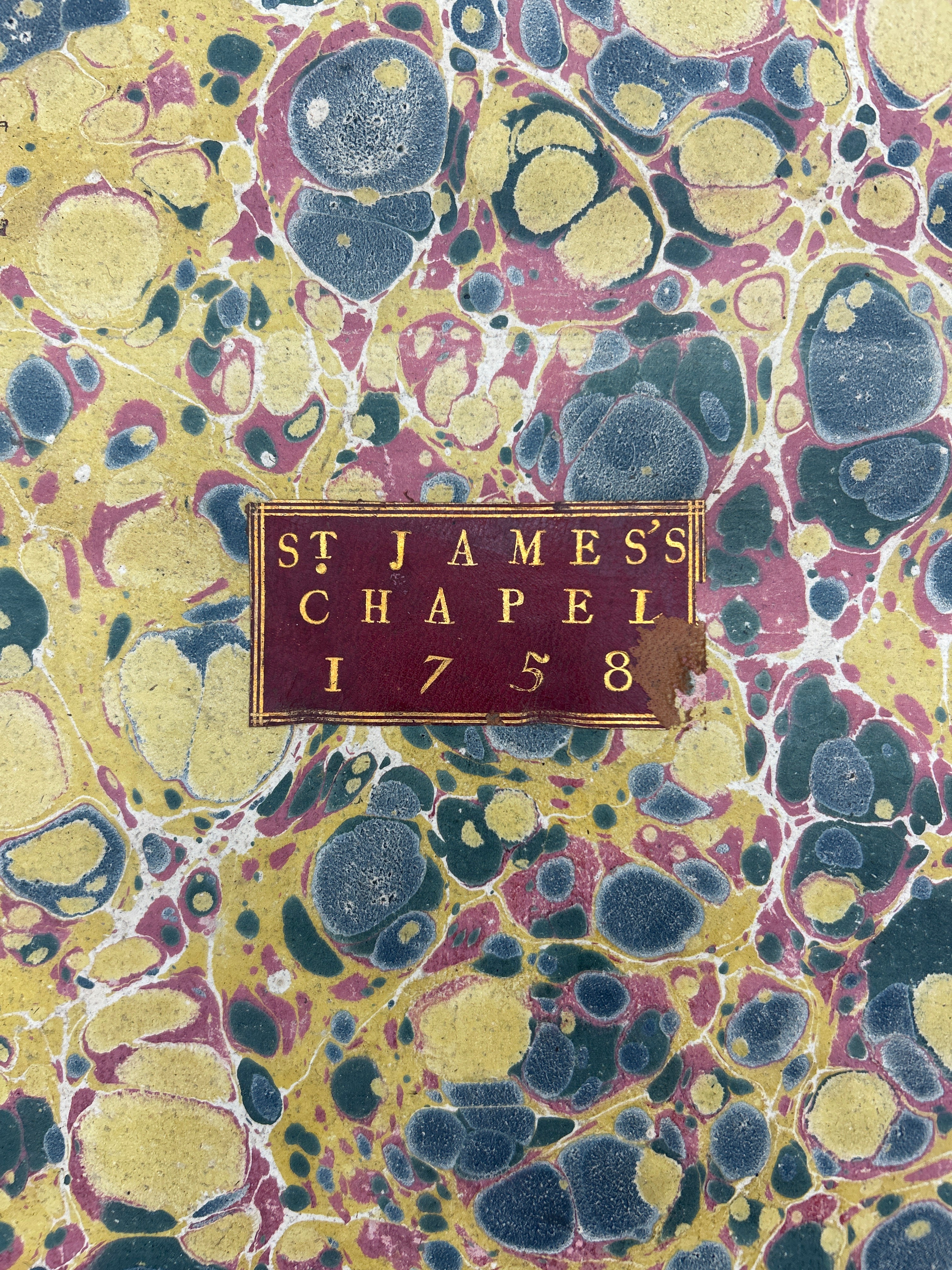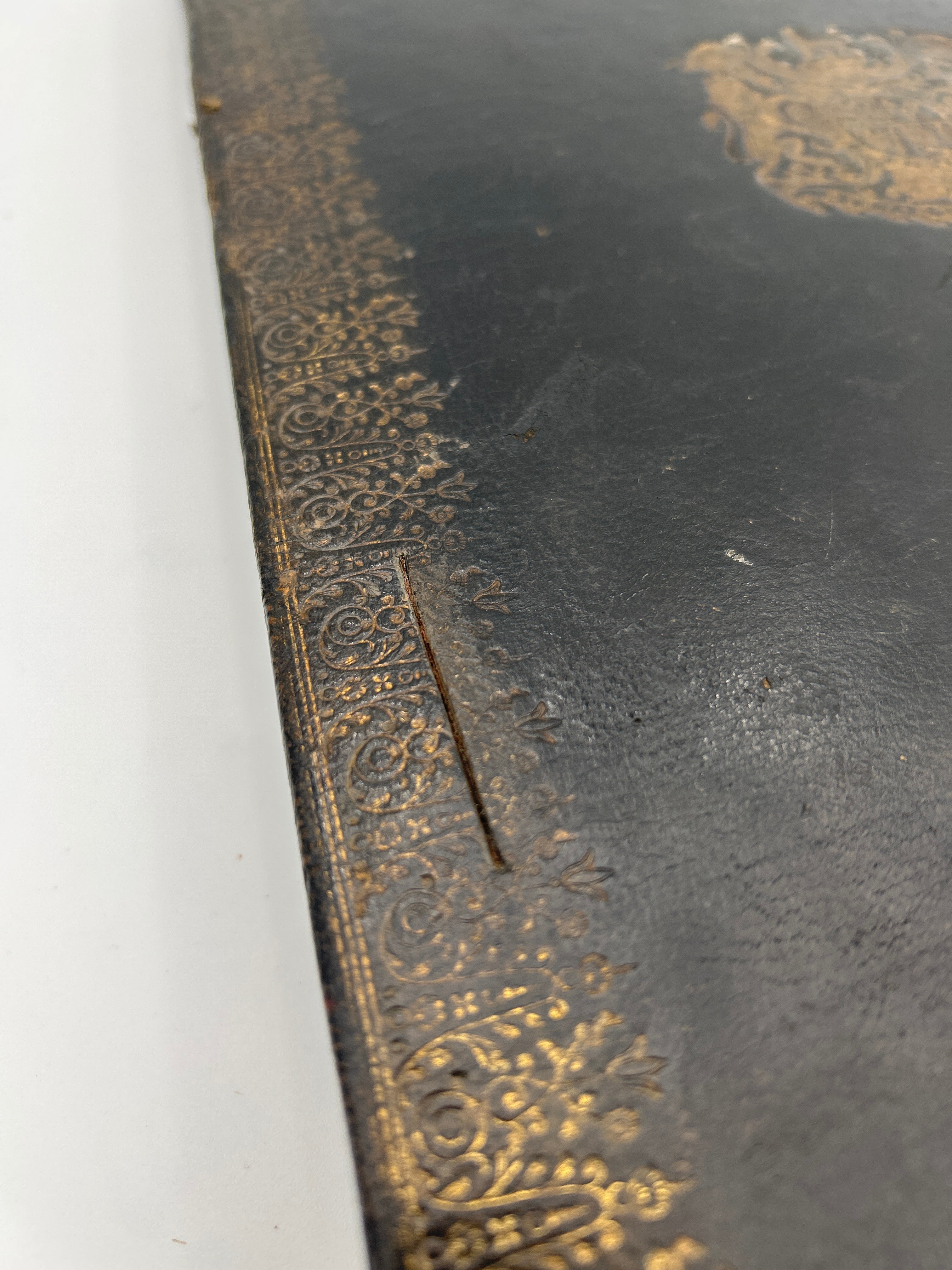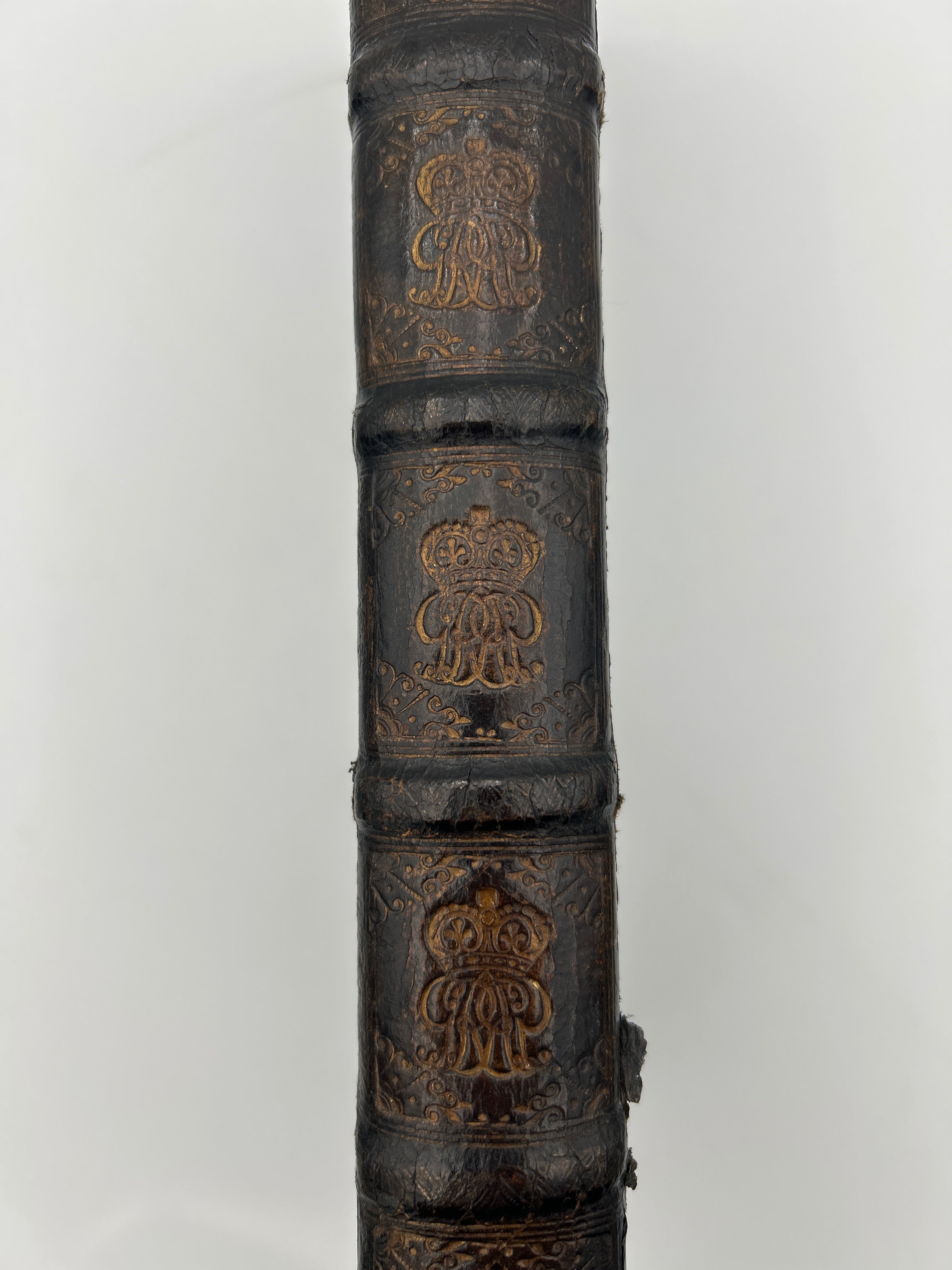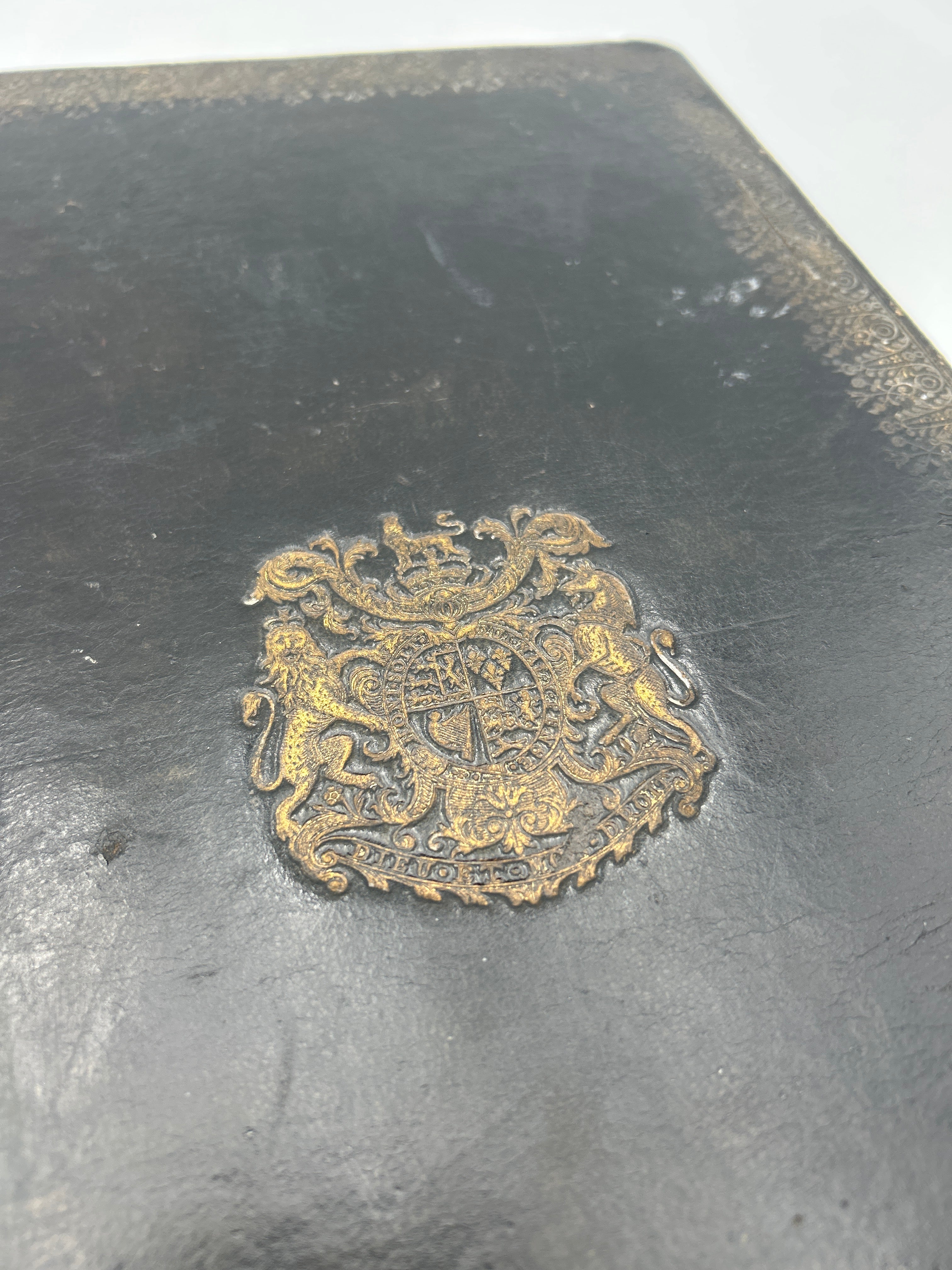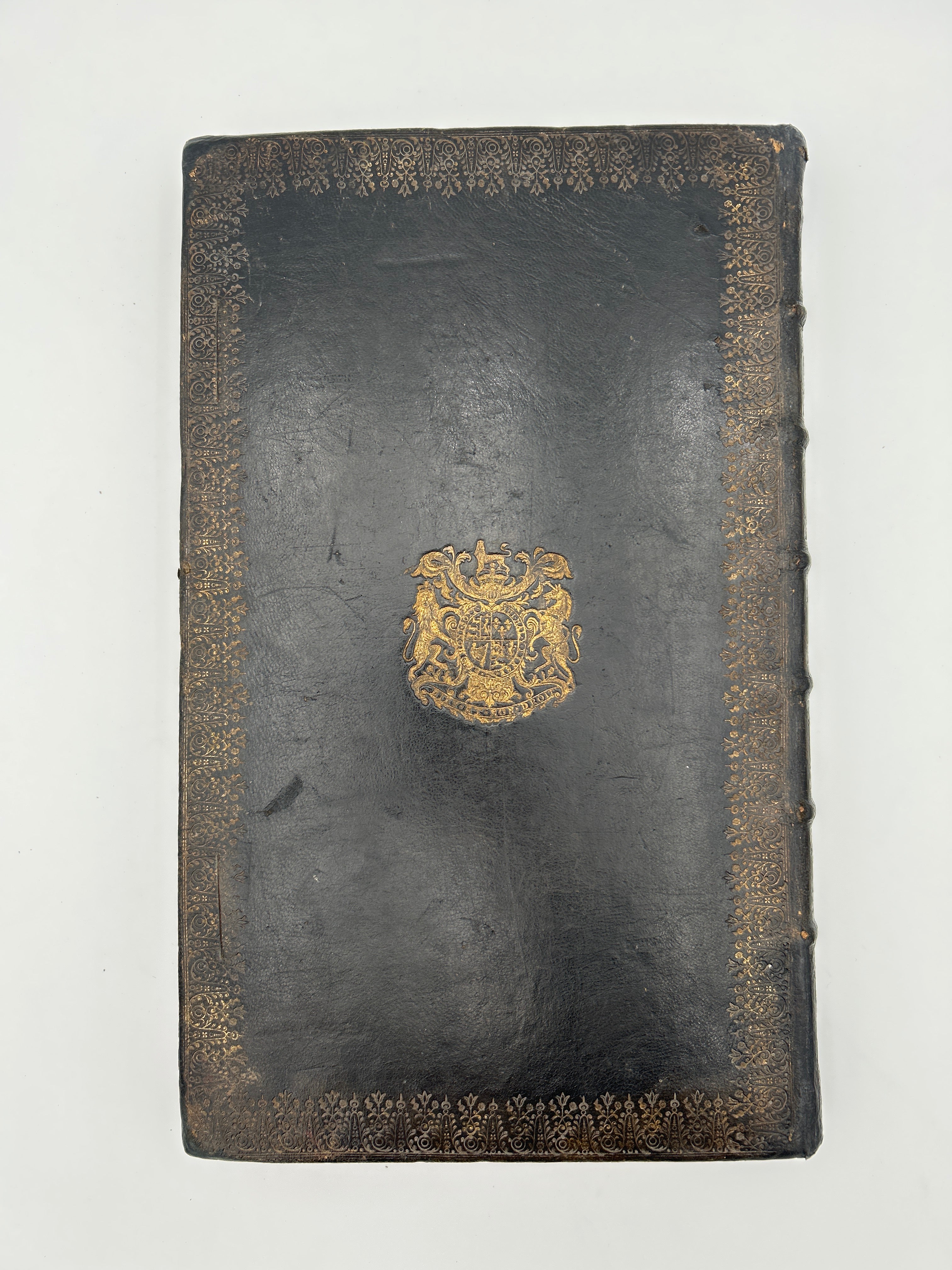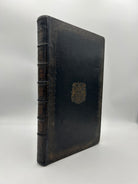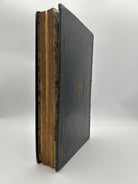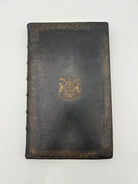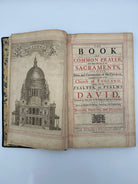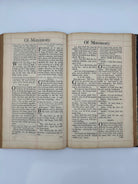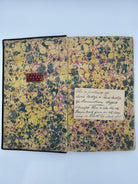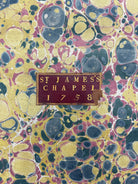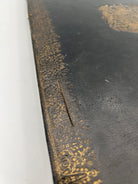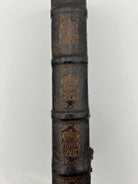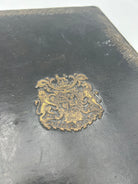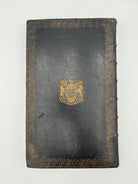Royally Bound Book of Common Prayer used in St. James’s Chapel in 1758
Couldn't load pickup availability
5B Book of Common Prayer and Administration of the Sacraments and other Rites and Ceremonies of the Church According to the use of the Church of England together with the Psalter of Psalms of David Pointed as they are to be sung or said in Churches and the Form or Manner of Making, Ordaining, and Consecrating of Bishops, Priests, and Deacons, London; Thomas Baskett. Printer to the Kings most excellent majesty and by the assigns of Robert Baskett, 1754.
Notes
The royally bound Book of Common Prayer used in St. James’s Chapel in 1758 during the reign of King George II is an extraordinary example of the craftsmanship, religious significance, and regal authority tied to ceremonial worship in the 18th century. St. James’s Chapel, a key royal chapel located within St. James’s Palace, served as a prominent venue for royal and state religious services, making this prayer book an important part of its liturgical practices.
This edition, bound in a luxurious royal style, was likely crafted to reflect the grandeur and dignity of its setting. Such bindings typically featured fine leather, intricate gold tooling, and royal insignia, symbolizing the Crown’s close ties to the Church of England. The use of a royally bound Book of Common Prayer in St. James’s Chapel underscored the unifying role of Anglican worship in British national identity and the monarchy’s role as Defender of the Faith.
This specific prayer book would have been used during official royal ceremonies, including weddings, baptisms, and other significant events held at the chapel. It stands as a testament to the enduring link between the monarchy and the Church, the meticulous artistry of 18th-century bookbinding, and the importance of liturgical texts in shaping religious and cultural traditions of the time.
Description
Fine black leather binding with ornate gilt detailing along the edges of the front and back boards with a gilt royal insignia embossed in the center of the front and back boards. Seven raised bands with gilt details of the initials of King George II and the royal crown in each compartment. Marbled endpapers. Red ruling and woodcut images throughout. Scuffing to the front and back boards. General cracking to small sections of the hinges. Bumped and rounded corners. Four, two inch incisions where brackets would have been attached to the front and back boards. Red leather plate on interior front board with gilt embossed lettering, “St. James’s Chapel 1758” with a tear to the lower right corner. Loose leaf with handwritten notes dated 1895. Very fine condition.
